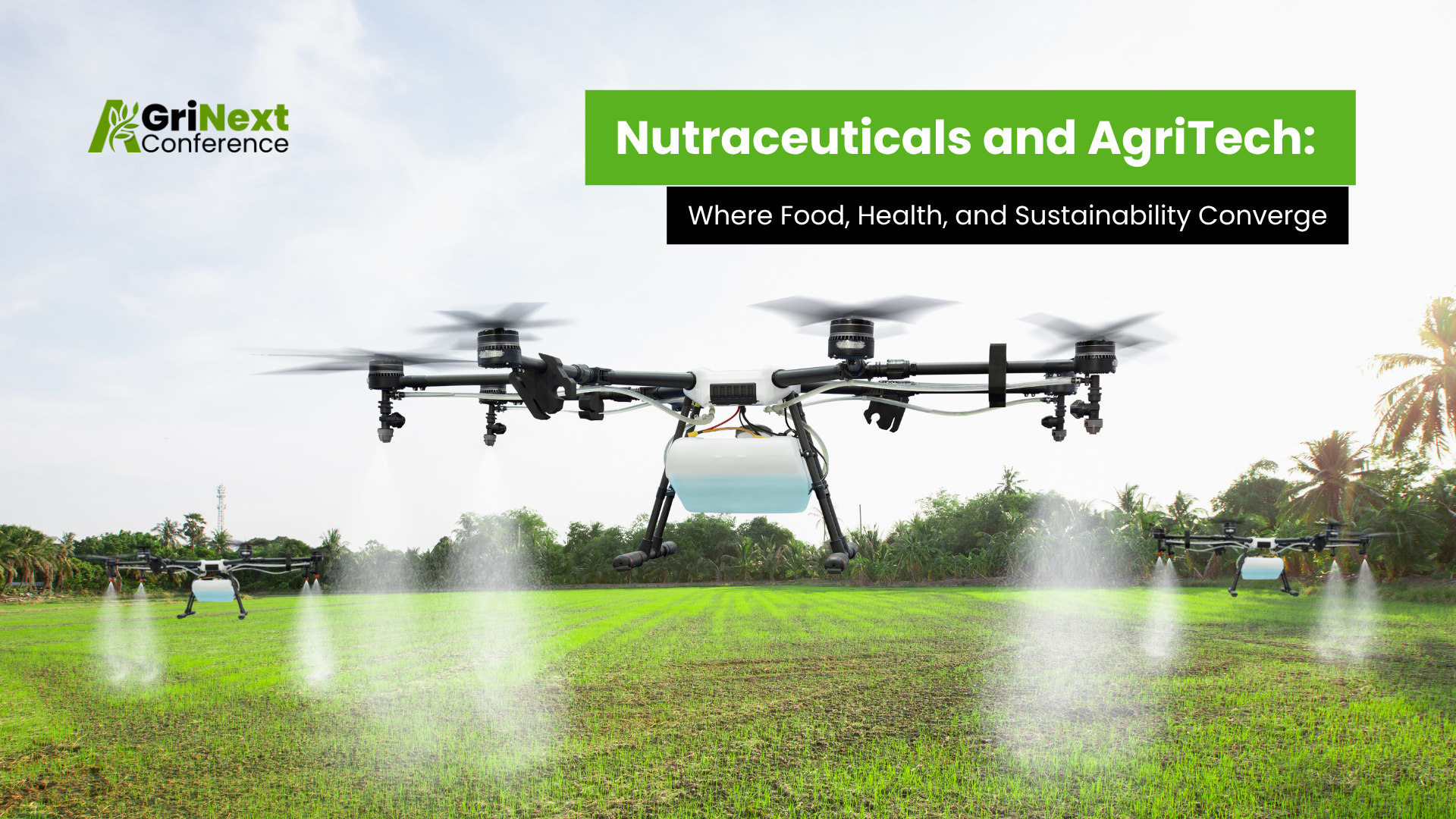
Exploring how smart agriculture is powering the rise of health-enhancing food products for a more sustainable future.
Nutraceuticals are products derived from food sources that offer health benefits beyond basic nutrition. Coined by Dr. Stephen De Felice in 1989, the term merges “nutrition” and “pharmaceutical,” highlighting the idea that certain foods or their components can help prevent or treat diseases—not just nourish the body. Today, nutraceuticals sit at the intersection of nutrition, medicine, and agriculture. With rising interest in sustainable farming and smart food systems, these bioactive compounds are gaining new relevance in the agri-tech era—unlocking the therapeutic power of food to promote wellness and prevent illness.
What Makes a Nutraceutical?
Nutraceuticals originate from foods, herbs, or botanical sources and are commonly available as capsules, powders, extracts, or fortified foods. These products are primarily used for disease prevention, health promotion, and as adjuncts to conventional medical treatments. Popular examples include omega-3 fatty acids, probiotics, antioxidants, herbal extracts like ginseng and Echinacea, as well as vitamins and minerals.
How Nutraceuticals Work
Nutraceuticals act through multiple mechanisms: they may neutralize free radicals through antioxidant effects, reduce inflammation, support gut health (especially probiotics), modulate metabolic or hormonal pathways, and deliver targeted nutrients for specific health conditions.
Case Example: Omega-3 Fatty Acids
Omega-3 fatty acids, particularly those found in fish oil and flaxseed, are among the most researched nutraceuticals. Clinical studies have confirmed their benefits in reducing inflammation, promoting cardiovascular health, and easing symptoms in conditions like cystic fibrosis and chemotherapy-induced toxicity.
EPA in Focus: A Deeper Dive
Eicosapentaenoic acid (EPA), a prominent omega-3 fatty acid, plays a central role in chronic disease prevention through several well-documented mechanisms. Its anti-inflammatory action involves competing with arachidonic acid, leading to the production of anti-inflammatory mediators like resolvins and proteins. For cardiovascular protection, EPA lowers blood pressure, reduces triglycerides, and enhances fat metabolism. Neuroprotective benefits of EPA include reduced cognitive decline and a lower risk of Alzheimer’s disease due to its role in maintaining brain health.
EPA also shows anti-cancer properties by inhibiting cell proliferation and supporting cell repair. Its role in metabolic regulation includes reducing lipogenesis and preventing lipid buildup, helping combat conditions like NAFLD. When combined with other bioactives like astaxanthin, EPA enhances antioxidant defenses, offering comprehensive protection against chronic diseases.
EPA is also produced through sustainable aquaculture and microalgae cultivation, highlighting the role of green technologies in delivering high-impact health solutions with minimal environmental cost.
Case Example: Curcumin
Curcumin, the primary bioactive component of turmeric, has gained popularity for its powerful anti-inflammatory and antioxidant properties. It is widely used as a supplement for managing arthritis, metabolic syndrome, and even as a complementary therapy in cancer prevention.
The Broader Impact
Nutraceuticals play a significant role in preventing chronic diseases such as diabetes, cardiovascular disorders, and certain cancers. They are increasingly being used alongside conventional therapies, often with fewer side effects than synthetic pharmaceuticals. As consumers become more health-conscious, the global nutraceutical market is growing rapidly, signaling a strong shift toward preventive and integrative healthcare.
Nutraceuticals, Sustainability, and AgriTech: Where They Meet
As demand for nutraceuticals like omega-3s and curcumin grows, sustainable agriculture and agri-tech innovation are becoming essential in ensuring their supply. From algae cultivation in controlled aquaculture systems to precision farming of turmeric, agri-tech tools such as IoT, AI, and vertical farming are being used to optimize yield, potency, and resource efficiency. Technologies like blockchain ensure traceability, while climate-smart practices reduce the environmental footprint of growing nutraceutical-rich crops. These advances align with global goals for food security, sustainable health, and green innovation—making nutraceuticals a key component of the future of agriculture.
AgriNext 2025: A Future-Focused Platform for Health & Food Innovation
At the upcoming AgriNext Awards & Conference 2025, scheduled for November 5–6 in Dubai, will spotlight nutraceuticals as part of the future of food innovation. With a strong emphasis on functional foods, personalized nutrition, and sustainable health solutions, the event serves as a hub for researchers, innovators, and startups working at the intersection of agriculture and health.
Expect thought-provoking sessions on plant-based bioactive, smart farming for health-focused crops, and the evolving role of nutraceuticals in global food systems. This intersection of health, agriculture, and technology reflects AgriNext’s broader mission to promote sustainable innovations that nourish both people and the planet.
References
A Comprehensive Review on Nutraceuticals: Therapy Support and Formulation Challenges – PMC
What-are-Nutraceuticals–News-Medical.net
New Concepts in Nutraceuticals as Alternative for Pharmaceuticals– PMC
Signup For AgriNext Conference Newsletter

